This article continues the very extended review of the Viking Pharaohs and Pyramids cruise down the Nile from Luxor to Aswan and back. The introductory article outlining the entire cruise including the visit to Cairo can be found here.
I’ve already covered a little of Day 2 in Aswan in the previous article where I talked about the bird watching cruise as we were headed towards the Nubian Village in the more rapidly flowing part of the Nile River. Many of the Nubian people originally lived further upstream alongside the Nile, but their villages and homes would be flooded as the Aswan high dam was constructed and so the government at the time arranged for new villages to be built around Aswan and this visit was for us to see what life is now like (as far as that means anything with tourists walking around your village every day!)
We landed and first visited a Nubian home to see the crocodiles that they have an affinity for. You might be pleased to note that the crocodiles here are actually quite small and have their jaws securely fastened – good enough for a photo opportunity!
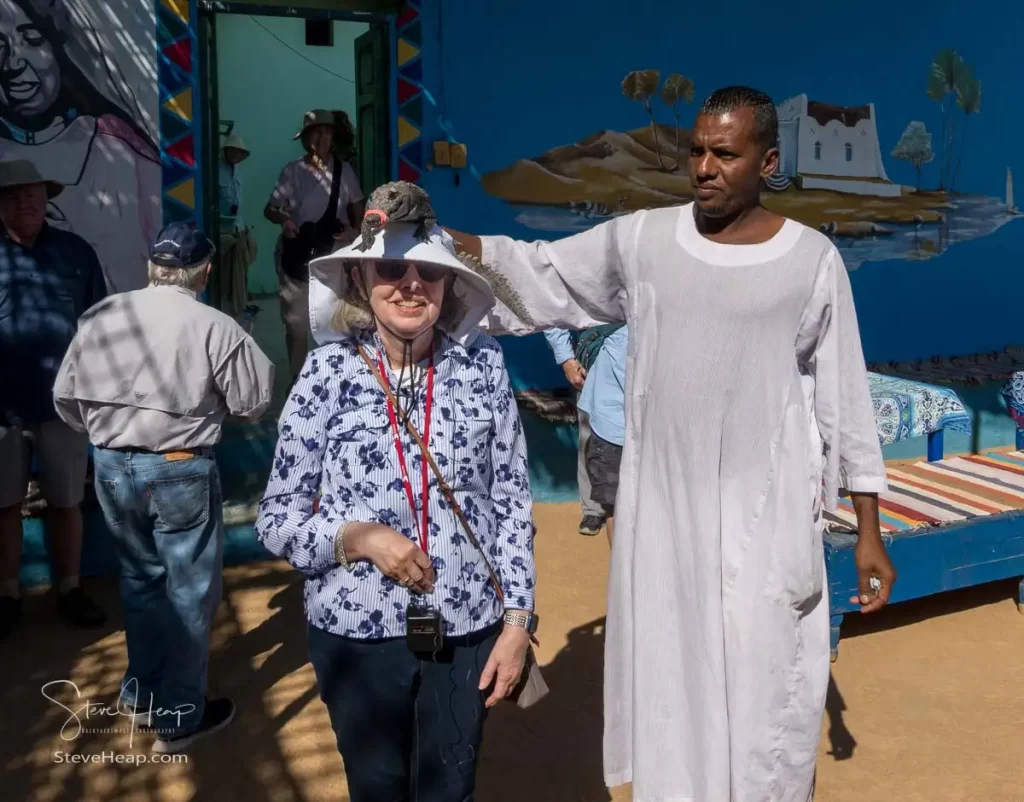
The homes here are decorated with impressive wall murals that perhaps show life as it used to be:
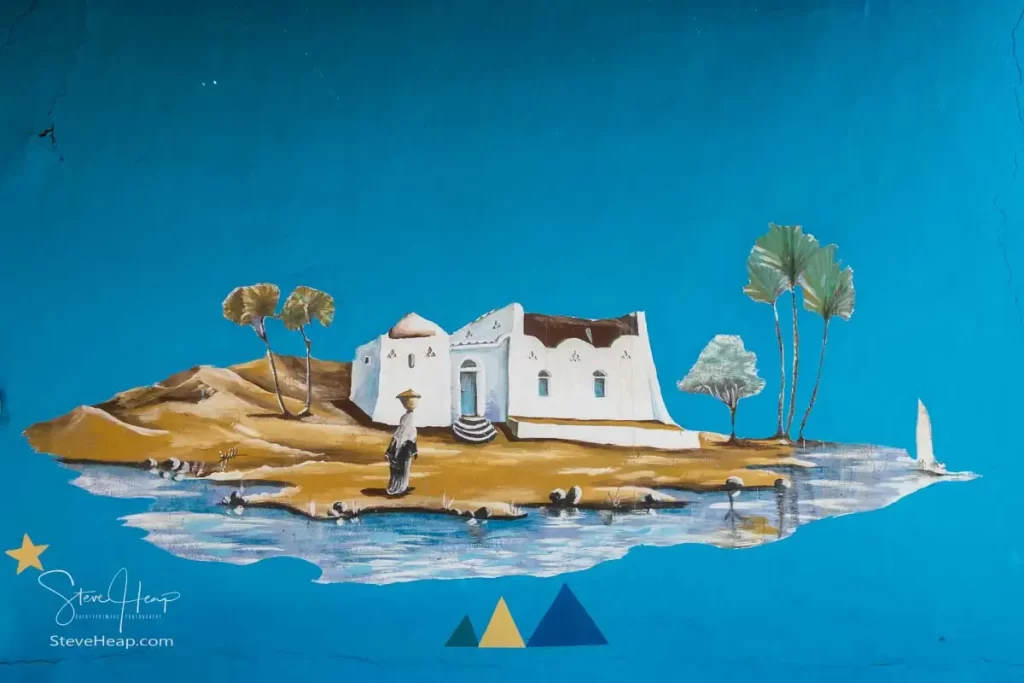
There were some interesting views from the rooftop balcony of the river which at this stage is far from wide and slow moving – it now flows quickly with many rocky islands blocking its progress. After this visit (dollars happily accepted and change given if needed!), we made our way down the main shopping street towards the school. Not much time to stop and shop although that didn’t stop the shopkeepers from trying. Interesting to see some locals making their way through the town on camels as we walked along:
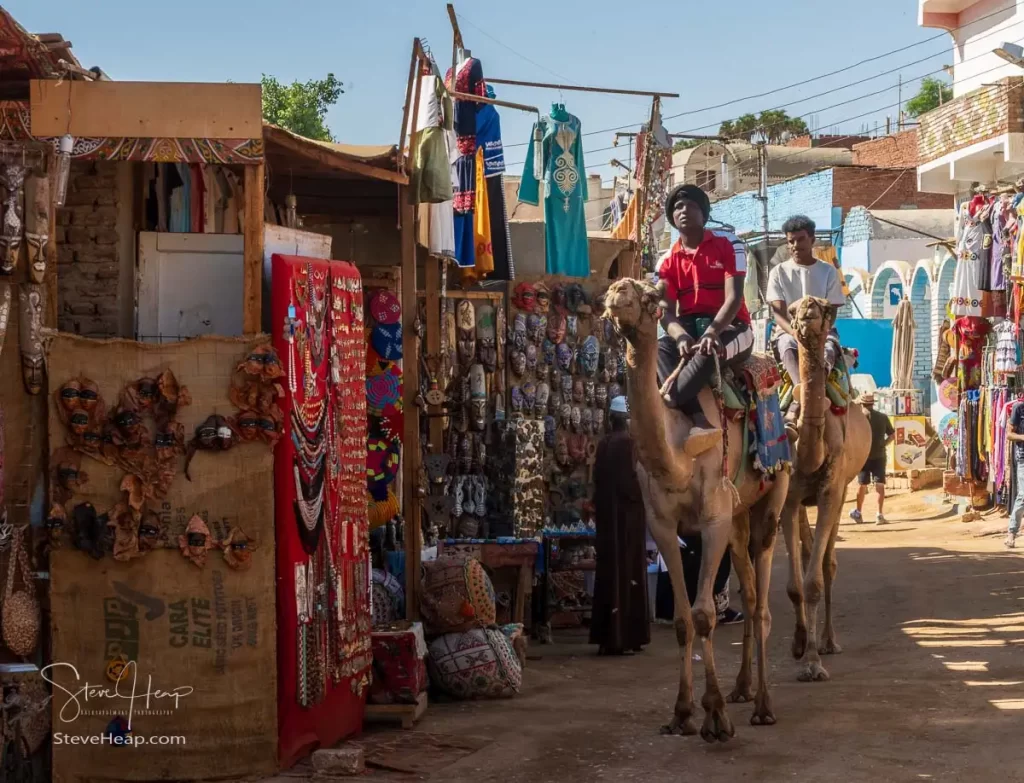
And very interesting to see a brightly colored pharmacy – not for the tourists, I’m guessing, with some interesting posters for useful medications:
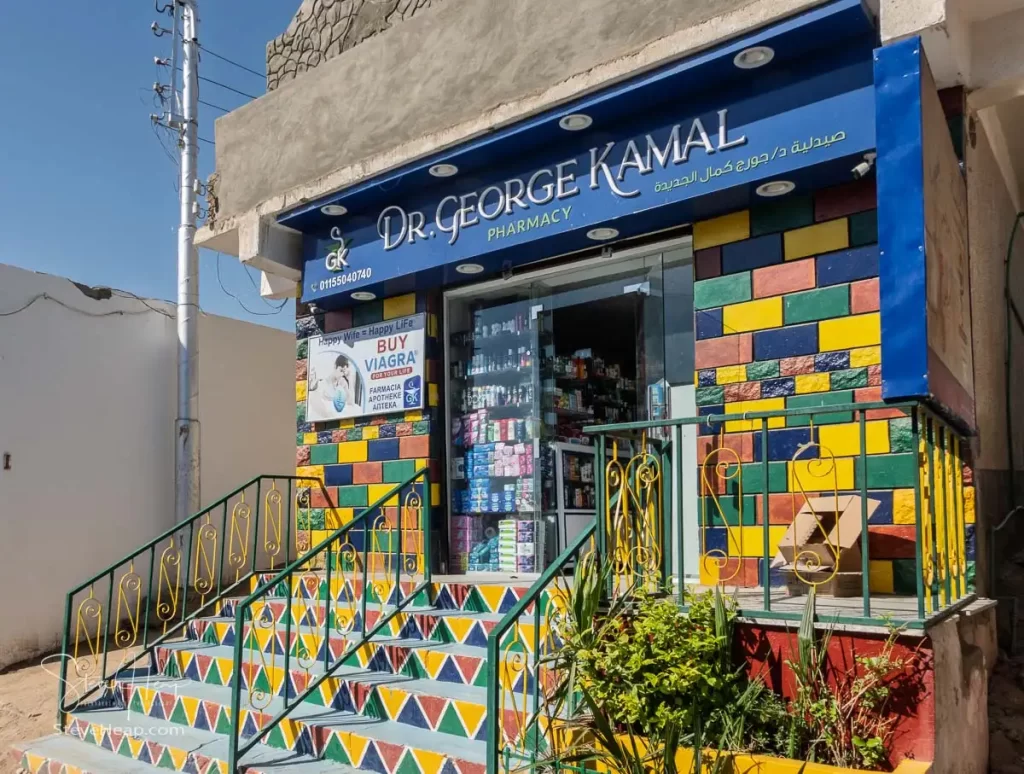
With that, we reached the school and were entertained by the children demonstrating their learning and were lucky to have a priest with our group who was more than happy to lead the children in some songs in Spanish!
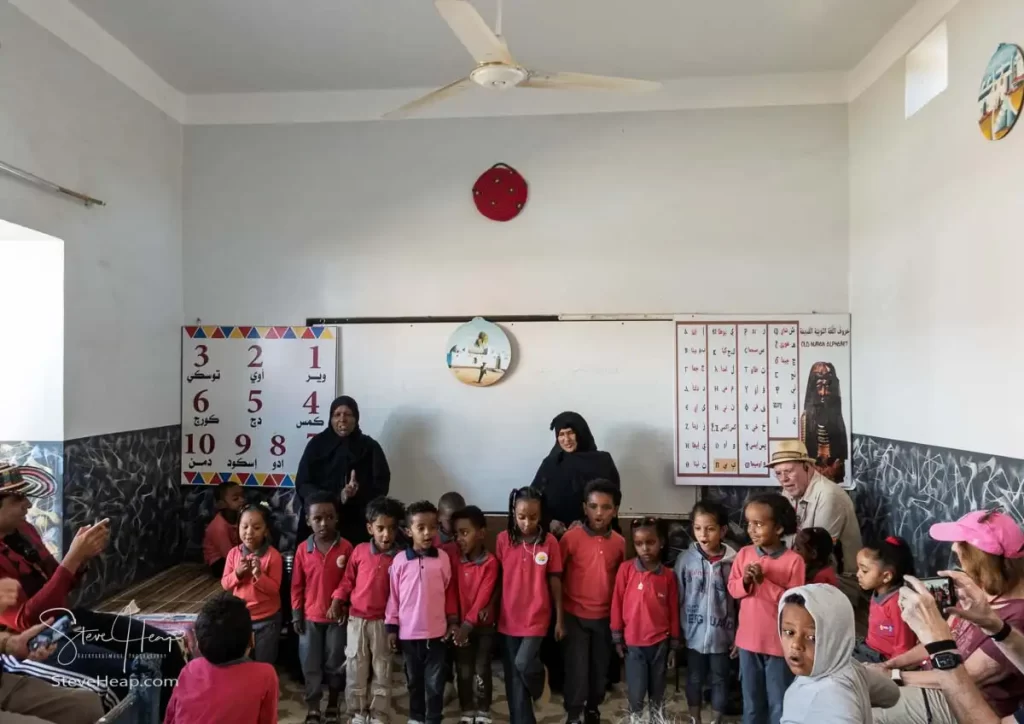
Back on the coach, we headed this time to the old dam that had been built across the Nile around a century ago to visit the Philae Temple. This monument has a most unusual history. Built on a small island near the first cataract of the Nile, it was threatened with submersion when the British built the Low Dam in Aswan in 1902. This dam was raised a couple of times and so by the 1930s, the temple was submerged in the lake for much of the year, only reappearing when the sluices were opened in the dam. The construction of the High Dam between 1960 to 1970, the temple would have been totally lost and so a rescue effort organized by the UNESCO member countries awarded contracts to take the temple down stone by stone and move it to a newly leveled and nearby island of Agilkia. The renovated temple monuments were cleaned and are now available year-round for visitors. You get there in smallish boats that leave constantly from the harbor near the Low Dam, but as you can see from this next picture, this was far from the busiest it can get here and shows how tourism has been impacted by the troubles in the Middle East:
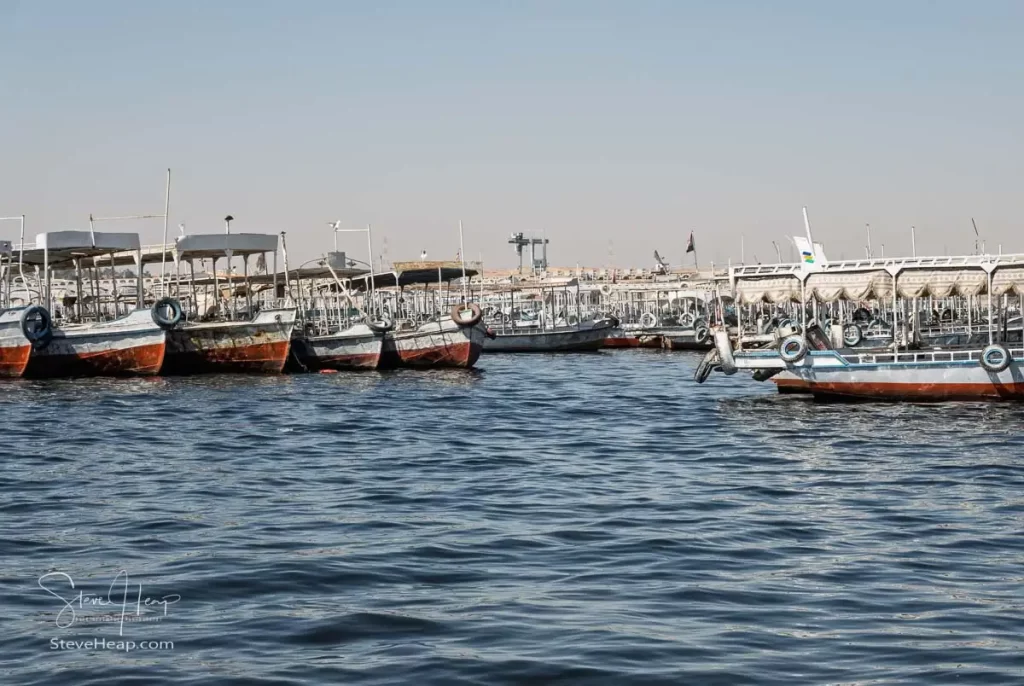
You first see the temple from the water as you approach, and it does look magnificent in its new location.
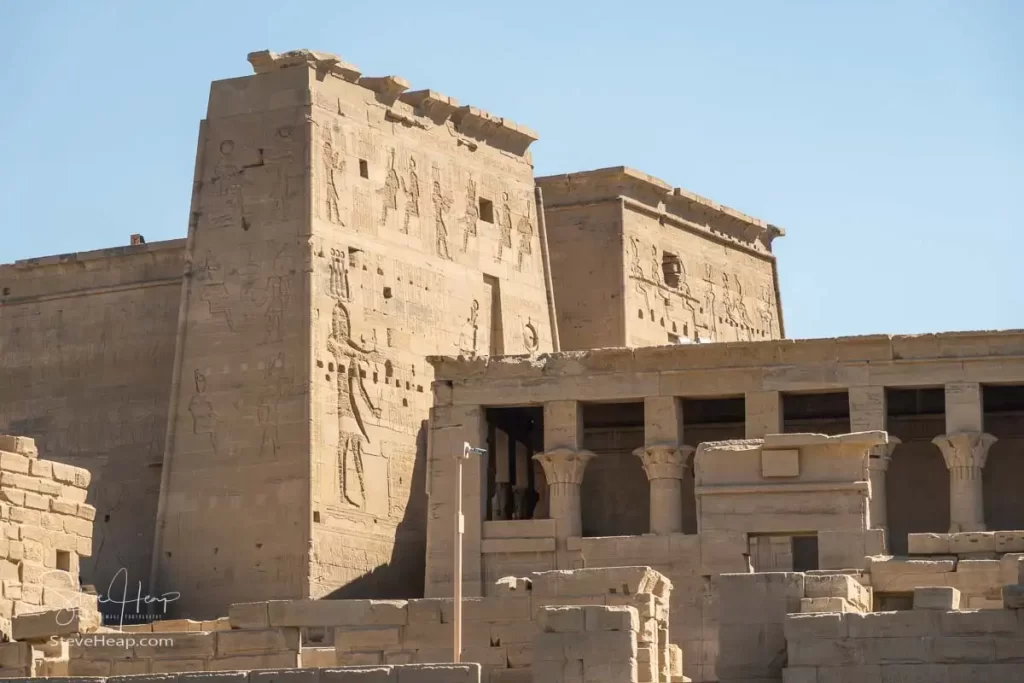
You land on the piers by the island and I think we had around 90 minutes here. As usual, we start with a tour with our guides and then we can explore at leisure. I’m always looking for interesting little details and here is a bird that found a nice use for one of the holes in the surface of the facade!
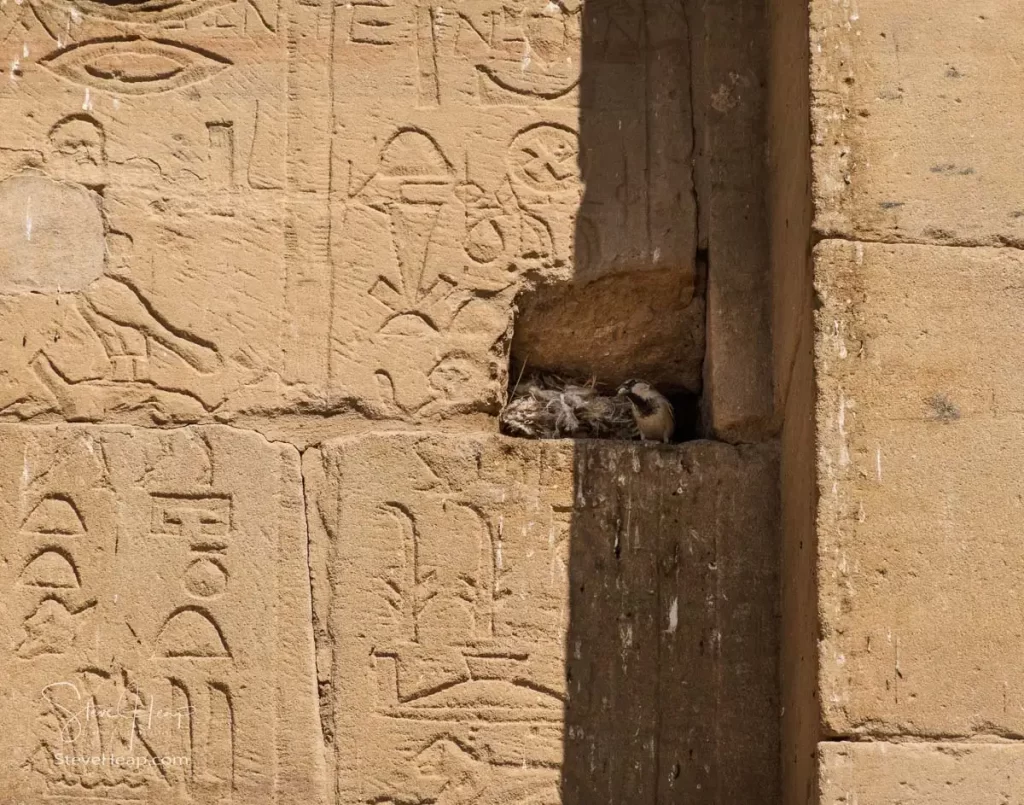
Another intriguing detail was the section of the temple inscribed with the names of the visitors from the 19th Century. Graffiti artists have always been with us, I guess.
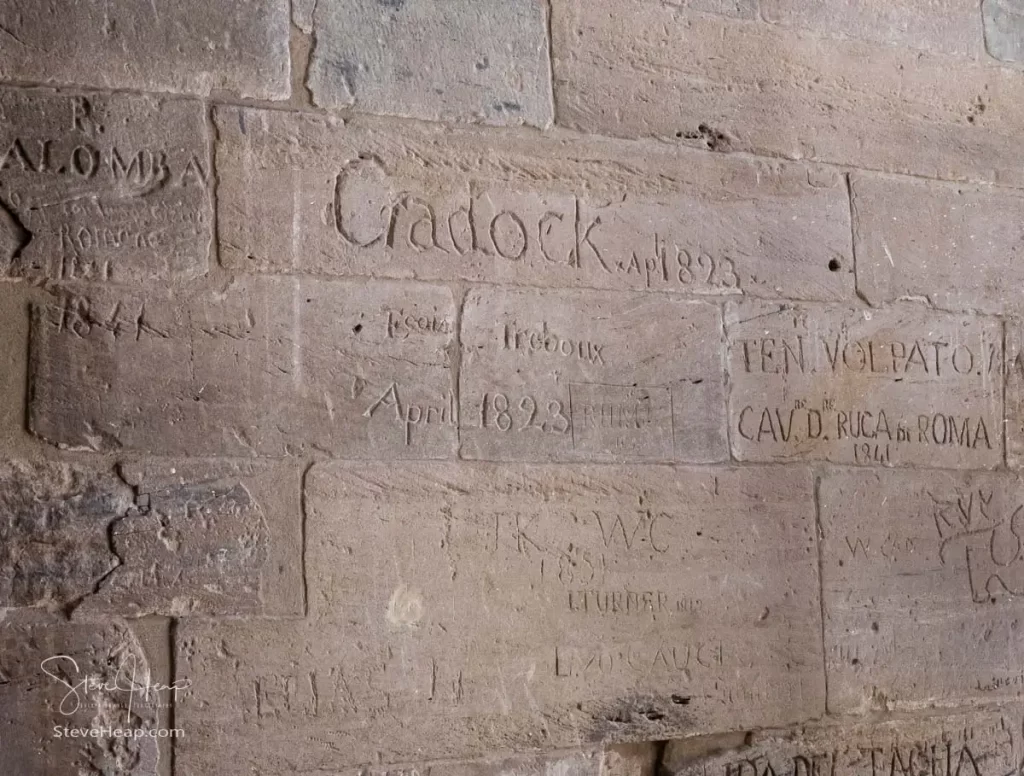
As usual, these temples turn out to be significantly larger than you expect:
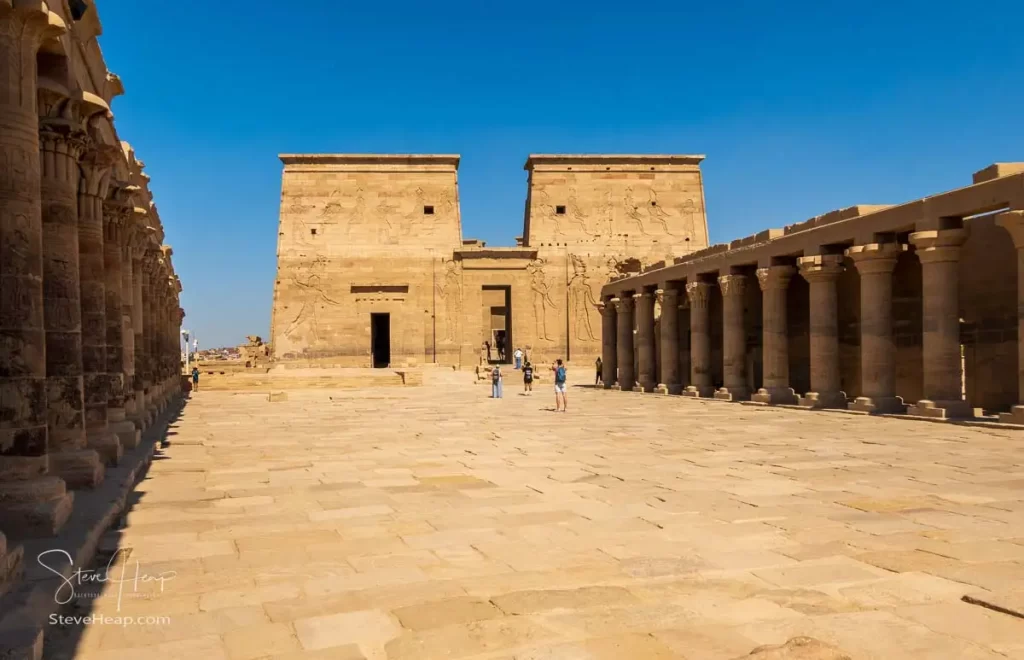
Also on the island is a separate temple, known as Trajan’s Kiosk after the Roman Emperor in about 100AD. It had also been on the island of Philae and moved before the final flooding:
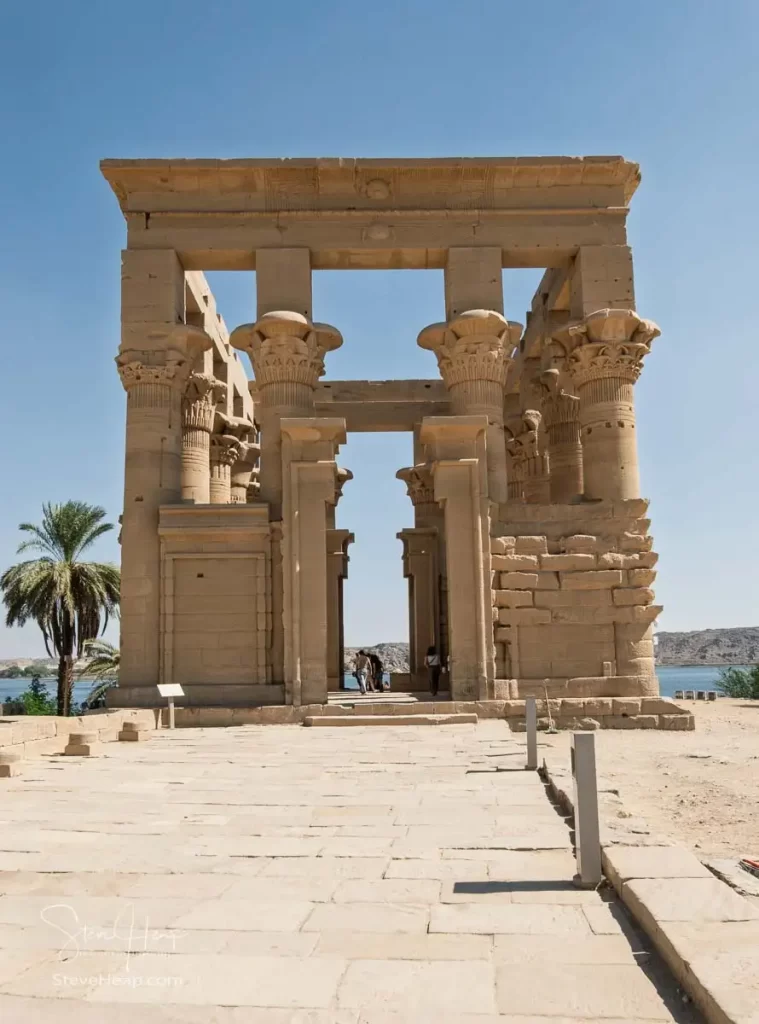
After a quick trip to the restrooms under the gift shop ($1 needed!), we boarded our boats and headed back to the coaches. There was a stop at a Papyrus museum (store) where we did learn how papyrus is made and why it lasts so long, but there is plenty of time to buy one of the many styles on display! Then back to the Antares in time for the departure at 1:30pm downstream towards Kom Ombo.
If you think you have seen temples, there are more! The cruise north is quite pleasant and restful, and we arrived around 4:30pm. The Kom Ombo temple is located alongside the Nile and so you see it as you approach the small town:
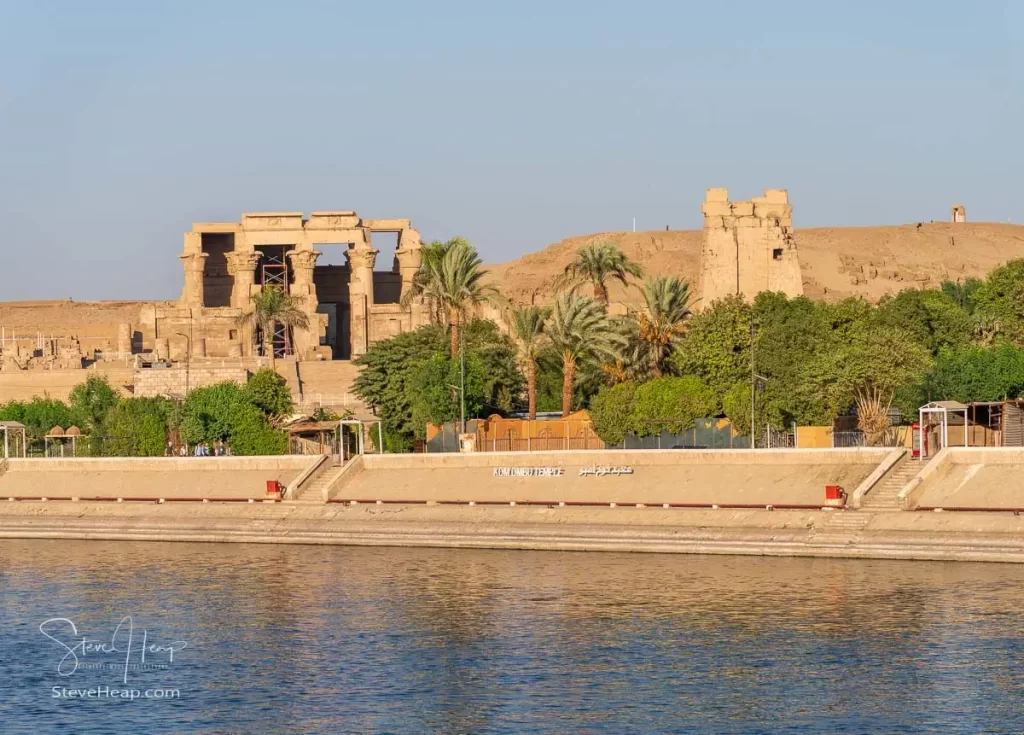
Here we docked a short distance from the Temple itself, and our plan here was to visit as the sun started setting so that we would have the final part of our tour at sunset and dusk. The temple has some dramatic elements as it is lit by the low sunlight:

Inside there are some wonderfully preserved carvings on the walls showing the gods and goddesses around the Pharoah:
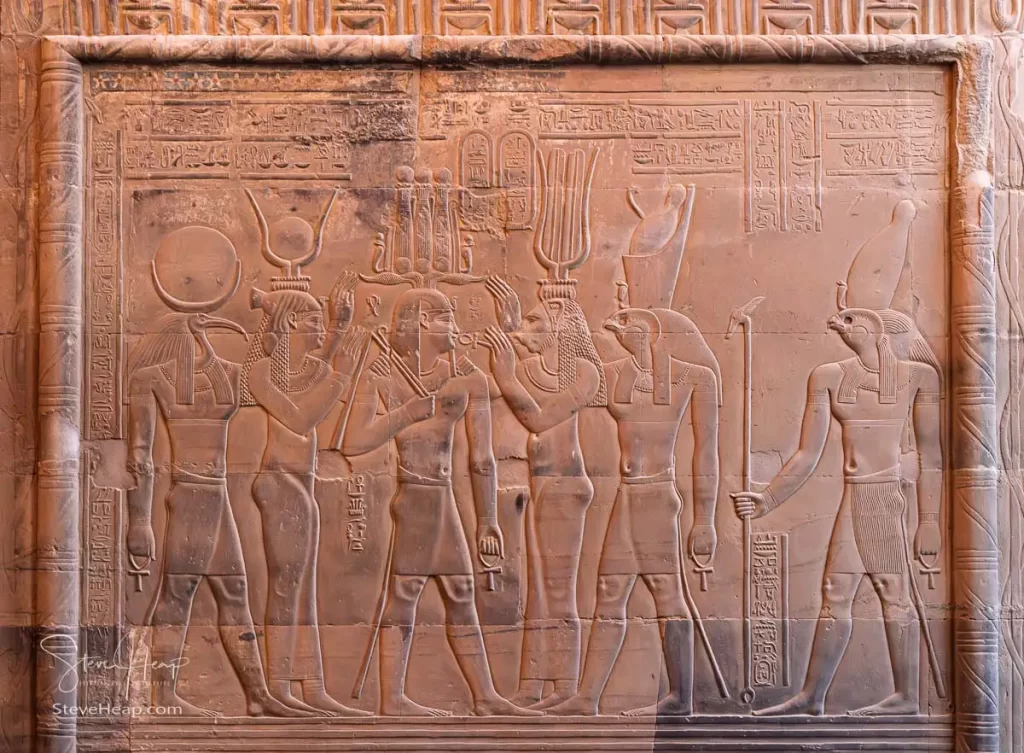
By now we should be able to recognize them! I think we have Horus, Sobek and Isis in this particular carving. The people here were very taken by the crocodile god, Sobek and the temple is dedicated to him.
The sunset was as nice as we had been promised, and I did take my tripod on this trip to capture the temple with the lovely orange colors in the sky after the sun had set over the Nile:
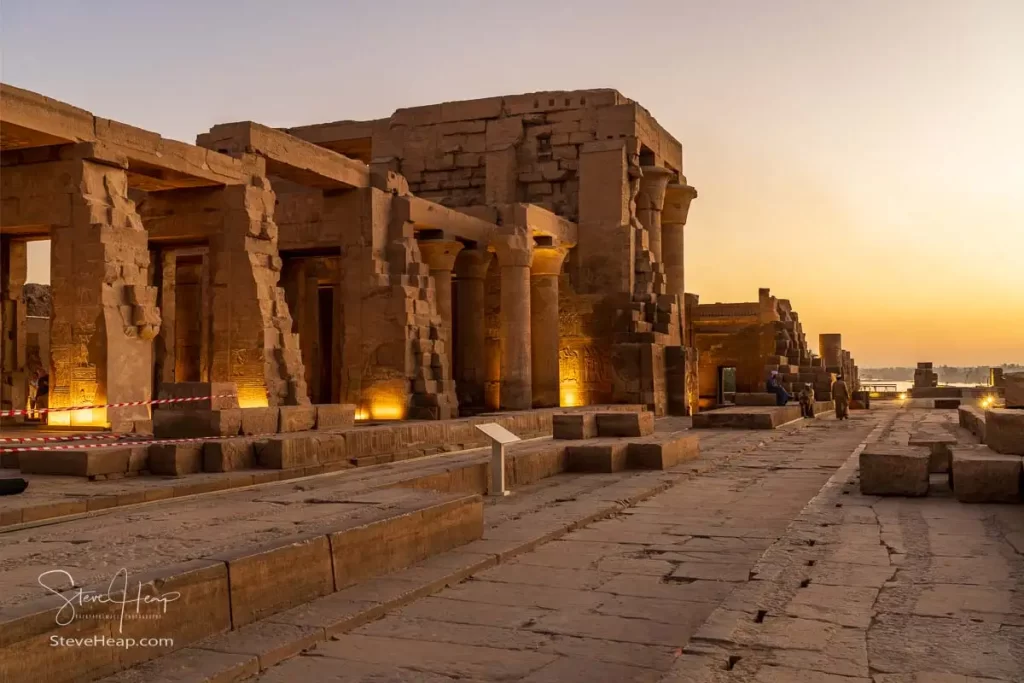
There was an opportunity to visit a museum about the artifacts found here – a real one. The shops selling their own artifacts were a necessary part of the journey back from the museum to the ship!
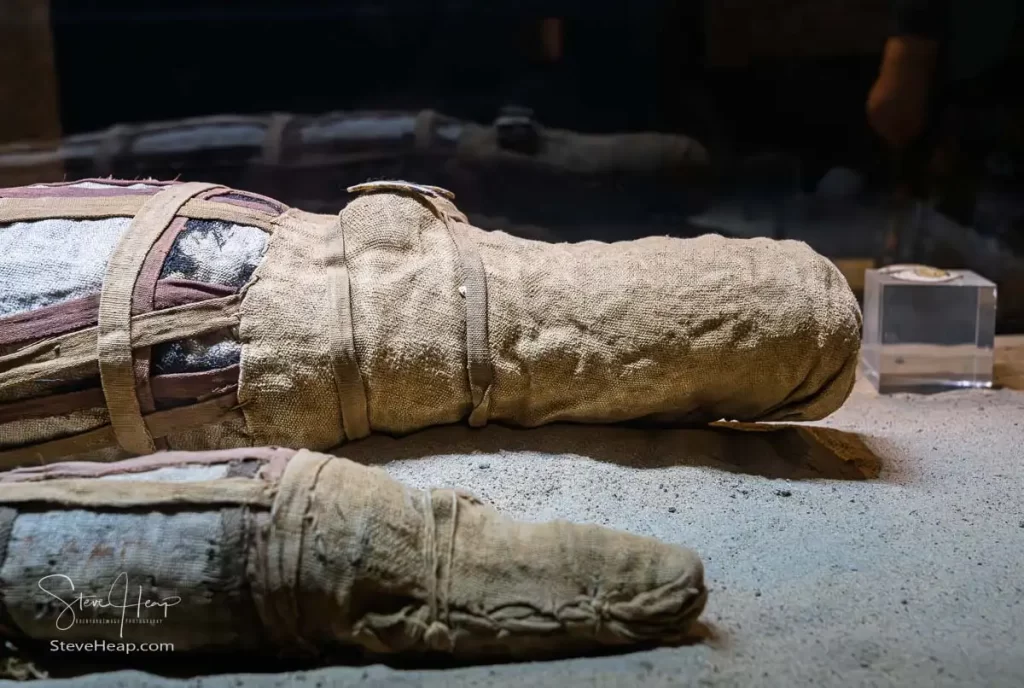
And, finally, back to the ship for dinner. The little town of Kom Ombo was much busier as many more cruise boats had arrived to see the temple after dark:
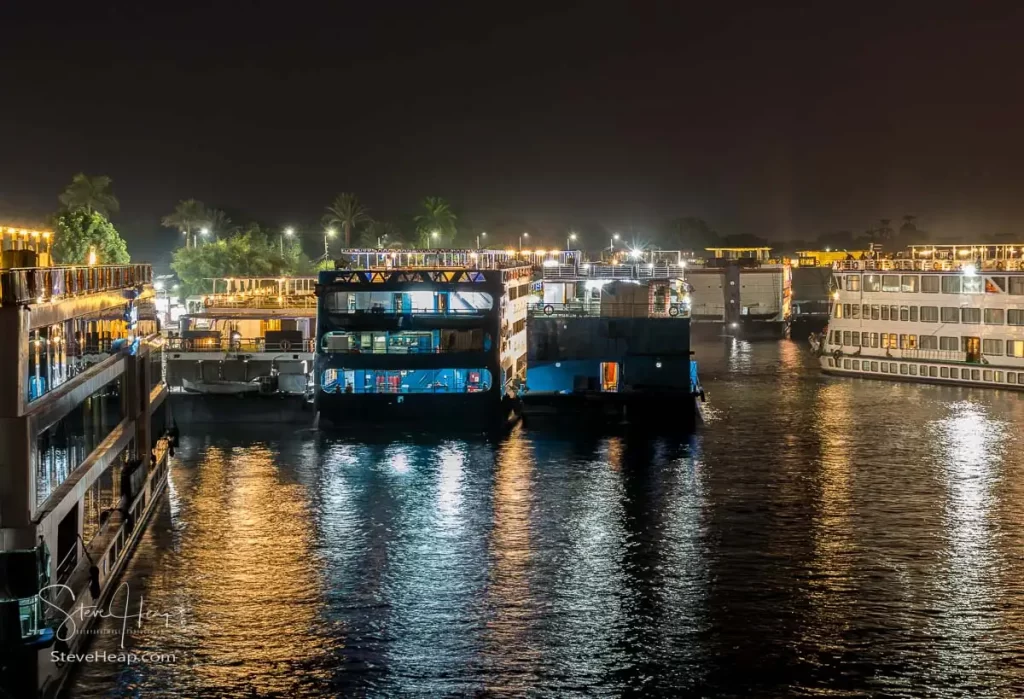
This departure for the final leg of our cruise takes us one more step towards the conclusion. But there is one more temple to visit – an even larger one at Edfu!
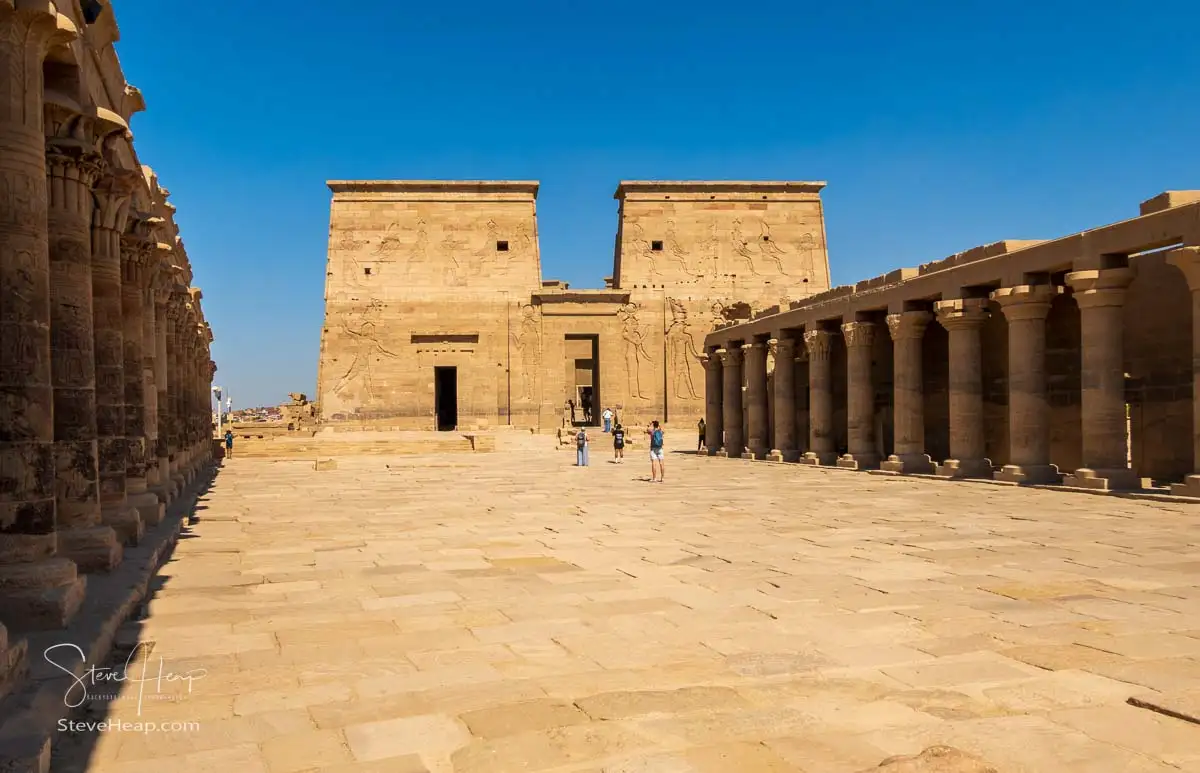
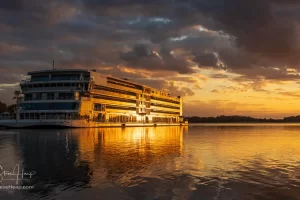
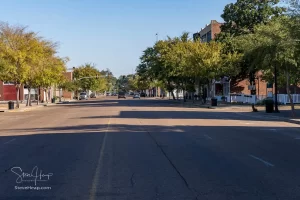
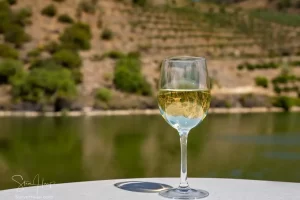
Paula Hansen
2 May 2025I was actually on this trip with you, although in the other bus. Your writing and pictures bring back wonderful recollections of the journey. Thank you!
Steve Heap
2 May 2025Hi Paula – it really was a fantastic trip, one of the best we have taken. I’m glad you found the articles to be interesting!